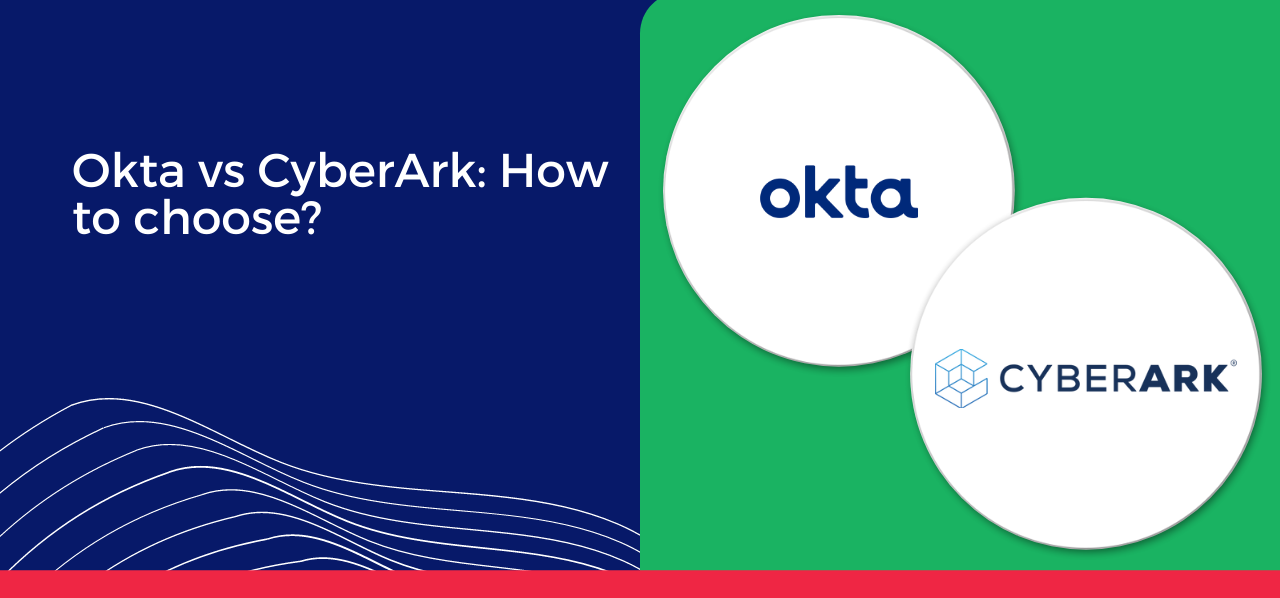
Not sure if CyberArk or Okta is the right choice for your requirements? No problem! Our comparison will help you make the best decision.
Okta is a leading identity and access management platform, while CyberArk specializes in privileged access security to protect critical accounts and systems.
Still uncertain? Let’s learn more about it in detail through CyberArk Online Training.
We will cover what makes CyberArk different from Okta and the strengths of each tool that will guide you in your organization.
Overview of CyberArk
What is CyberArk?
CyberArk deals in cybersecurity, particularly in privileged access management, which is commonly referred to as PAM. Privileged accounts are used at a higher level and give the user wider access to important data and systems. CyberArk aims to protect such risky accounts from cyber criminals to avoid various cyber crimes and hacking incidents.
Key Features of CyberArk
1. Privileged Account Security
The specialty of CyberArk revolves around governance and the protection of privileged credentials. This includes password repositories, recording of the session, and/or real-time capturing.
2. Endpoint Privilege Manager
This feature minimizes the occurrences of endpoint attacks since it implements the principle of least privilege and regulates the usage of applications.
3. Application Access Manager
Protects application credentials and guarantees that main data will not be disclosed to unauthorized people.
4. Threat Analytics
Relies on high-level statistics and mathematical algorithms to alert for and prevent security threats on the fly.
5. Compliance and Reporting
Ensures organizations can meet their obligations by affording comprehensive executive summaries of audit trails.
Overview of Okta
What is Okta?
Okta, as an identity and access management platform, mainly covers user authentication and single sign-on solutions. Okta makes it easier for organizations to secure user identities and allow users to get access to the resources they require.
Key Features of Okta
1. Single Sign-On (SSO)
Enables users to work on several applications using a single ID and password, thus enhancing the user-friendliness of applications.
2. Multi-Factor Authentication (MFA)
It enhances security by requiring the user to provide many types of identification to gain access to information.
3. Lifecycle Management
Helps manage user accounts, release requisite access for users to specific resources, and remove access when not required.
4. API Access Management
Protects API from unauthorized ends and ensures that only permitted applications can connect with your systems.
5. Universal Directory
Enables the management of user identities from different application points and interacts with numerous applications and systems.
Comparing CyberArk and Okta
CyberArk addresses certain areas of identity and access management but has a very different range of solutions than Okta. Below, we will compare these two platforms based on several important factors that are worthy of consideration.
Focus Areas
- CyberArk: Mainly concerns the privileged access management. The goal is to protect accounts with complex rights and frequent access to high-risk systems or information, including system administrators and other IT specialists.
- Okta: Operates in an identity and access domain that focuses on authentication of all entities and providing them with a single login.
User Authentication
- CyberArk: It provides robust authentication solutions to users and is mainly targeting the protection of privileged identity rather than the typical identification of users.
- Okta: It stands out for its high-quality user authentication features, specifically SSO and MFA. So, it’s perfect if you’re looking for a single solution for all user types.
Privileged Access Management
- CyberArk: Market leader in the PAM market that offers wide-ranging tools for management and monitoring, as well as the protection of privileged accounts.
- Okta: While it does have some PAM features present within it, it is not as dedicated to or as extensive with PAM as CyberArk is.
Endpoint Security
- CyberArk: Delivers other enhanced endpoint protection capabilities via its Endpoint Privilege Manager, which helps enforce privilege reductions and manage application permissions.
- Okta: Closely related to user identity and authentication, and there is less stress on endpoints and endpoint protection.
Compliance and Reporting
- CyberArk: Includes numerous compliance and reporting tools. It allows the subjects of regulation to navigate compliance standards due to real-time auditing and compliance reports.
- Okta: It also offers compliance and reporting features. However its major advantage is in the identity and access management more so than in instances of privileged accounts.
Read: AI Development with ReactJS | Achieving Dynamic & Futuristic Solutions
Advantages of CyberArk
1. Specialization in PAM: CyberArk is currently the leading provider of privileged access management solutions and hosts a range of tools for managing privileged accounts.
2. Advanced Threat Detection: Provides smart analysis to identify any threats in the system from intruders in real-time.
3. Comprehensive Compliance: Simplifies compliance with numerous records of events and the capacity to view compliance reports.
4. Endpoint Security: It also offers strong functionalities to protect the endpoints of a network to avoid being attacked.
Advantages of Okta
1. User-Friendly Authentication: Okta specializes in user authentication for logins with Single Sign-On and Multi-Factor Authentication.
2. Identity Management: Permits the management of user identities within one place for several applications and systems.
3. Lifecycle Management: User management that will enable the automatic assignment or removal of user access to resources based on their authorization.
4. Scalability: Okta uses a cloud-based system, and it is very easy to scale up or scale down; thus, it is good for organizations of any size.
Use Cases
When to Choose CyberArk
1. Privileged Access Management: If an organization has a large number of privileged accounts that require protection, CyberArk is the most effective.
2. Compliance Requirements: Another essential aspect that may come in handy is the compliance reporting and feature offers that CyberArk delivers as a comprehensive package.
3. Endpoint Security: For organizations, if the main goal is to enhance endpoint protection, then CyberArk’s Endpoint Privilege Manager can address this issue.
When to Choose Okta
1. User Authentication and SSO: If you wish for all of the users to have a more efficient and protected way of logging in, then you can turn to Okta for SSO and MFA.
2. Identity Management: Okta’s Universal Directory is perfect if you are looking for a location to maintain your users’ identities combined with many applications and systems.
3. Scalability: Alternatively, if you are an organization experiencing growth, Okta adapts well because it is cloud-based.
Integration and Compatibility
CyberArk
CyberArk is compatible with most operating systems, databases, and cloud platforms. Because of this capacity, it can easily be integrated into most IT structures, thus making it a suitable option for many establishments.
Okta
Okta also provides deep integration features with extensive outreach to connect to thousands of other applications and systems. Due to its UD and API access control capabilities, other departments can be linked up and become fully in charge of user identities.
Cost Considerations
The amount of money that you are likely to spend on a CyberArk or Okta will differ with aspects like the size of your firm, the number of people that you will assign on the platform and the variety of services that you want the platform to come with.
CyberArk
CyberArk pricing is contingent upon various factors like a number of privileged accounts and required features. It is usually regarded as an investment for organizations that possess large requirements for privileged access management.
Okta
Pricing for Okta is typically based on the number and the type of user you need, as well as the features you want to incorporate. Still, regarding versatility, it provides several packages for each customer type, so it can be useful for numerous organizations.
Customer Support
CyberArk provides extensive customer help in the form of documentation, forums, and channels for reaching out to the company directly, as does Okta.
CyberArk
CyberArk has also included various support tools such as a knowledge base, support community and support case management. It also has implementation and training services for professionals.
Okta
For support needs, Okta has a vast knowledge base, forums and direct access forms of support. It also offers proprietary services for deployment and maintaining the services.
Conclusion
Altogether, CyberArk and Okta are powerful solutions to protect from cyber threats. However, they specialize in different spheres of identity and access management. CyberArk is best suited for organizations that require solving the problem of privileged account security and compliance with strict regulations. It utilizes advanced threat detection, enhanced compliance, and essentially the most unbending endpoint security that places it at the top of the PAM industry.
On the other hand, Okta has a comparative advantage when it comes to user authentication, customarily to identity management. Due to the presence of its SSO and MFA, as well as the ability to manage and scale users’ lifecycles, it is ideal for companies that wish to simplify and secure logins for any users.
In conclusion, it can be stated that the competition between CyberArk and Okta will depend more on the specific requirements of your company’s IT department. However, if privileged access management and endpoint security are what you mainly focus on, then CyberArk is preferable. However, suppose you need a more graphical, easily manageable, and highly scalable solution with regard to the users and their identities and authentications. In that case, you should turn to Okta.



